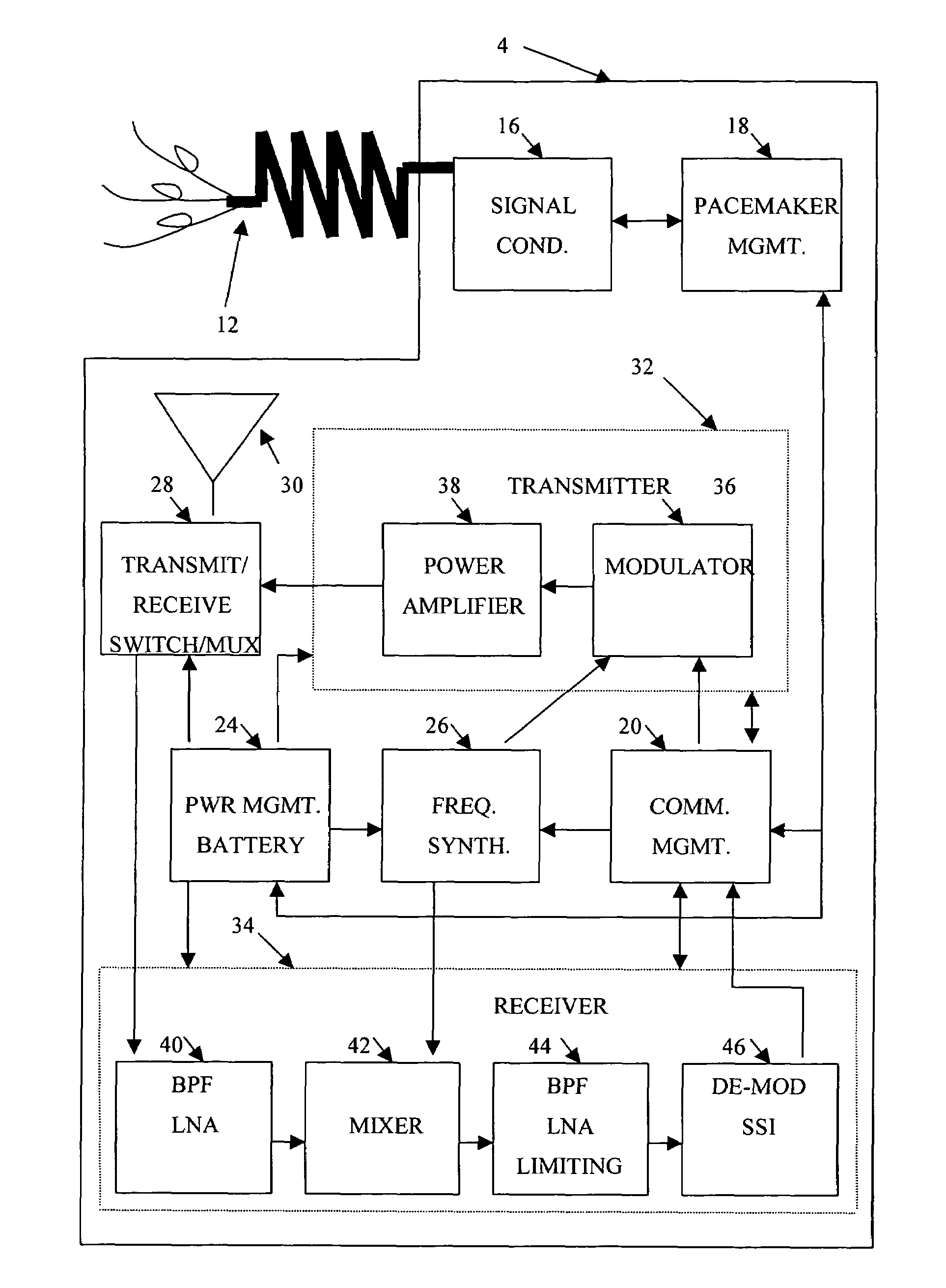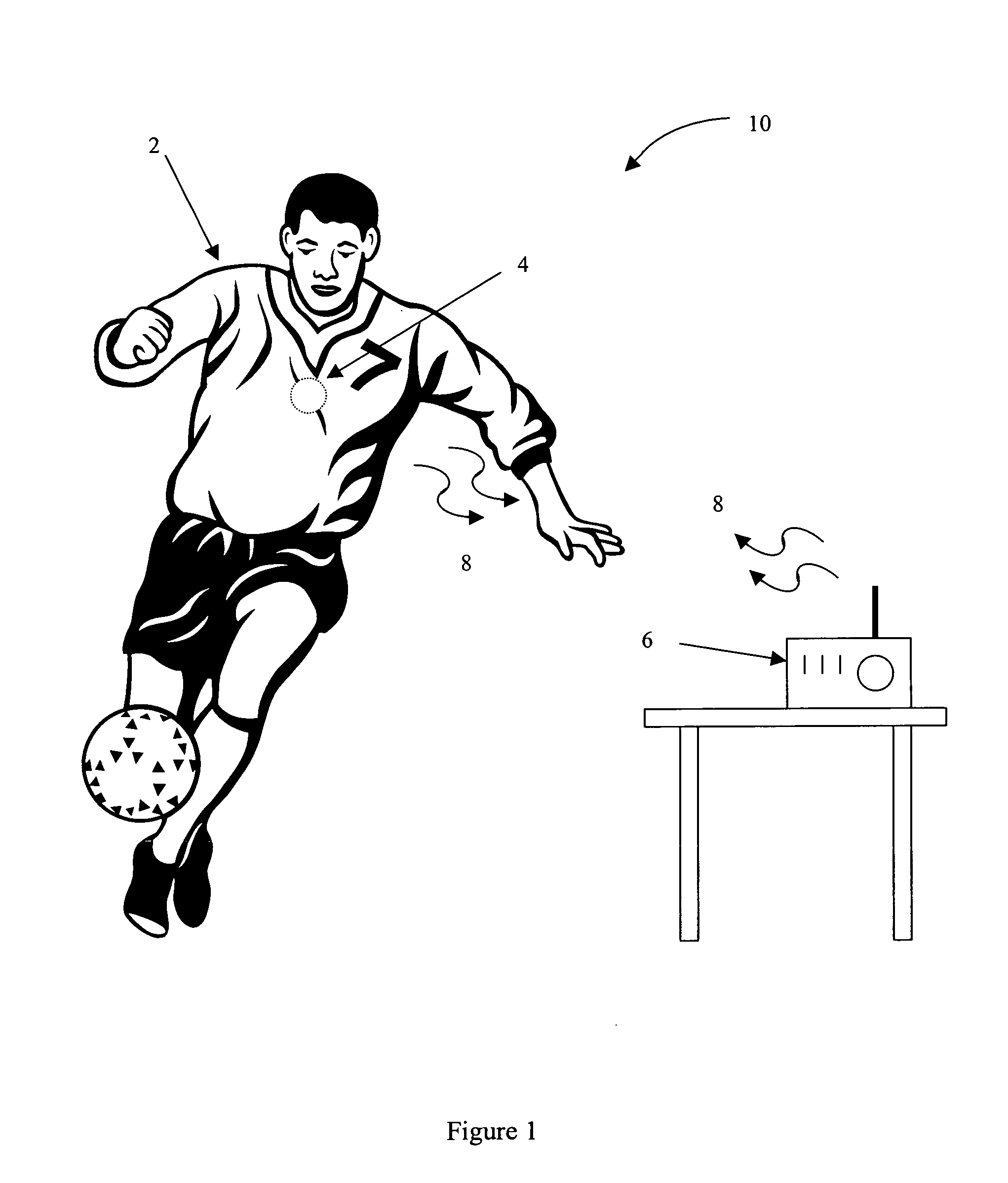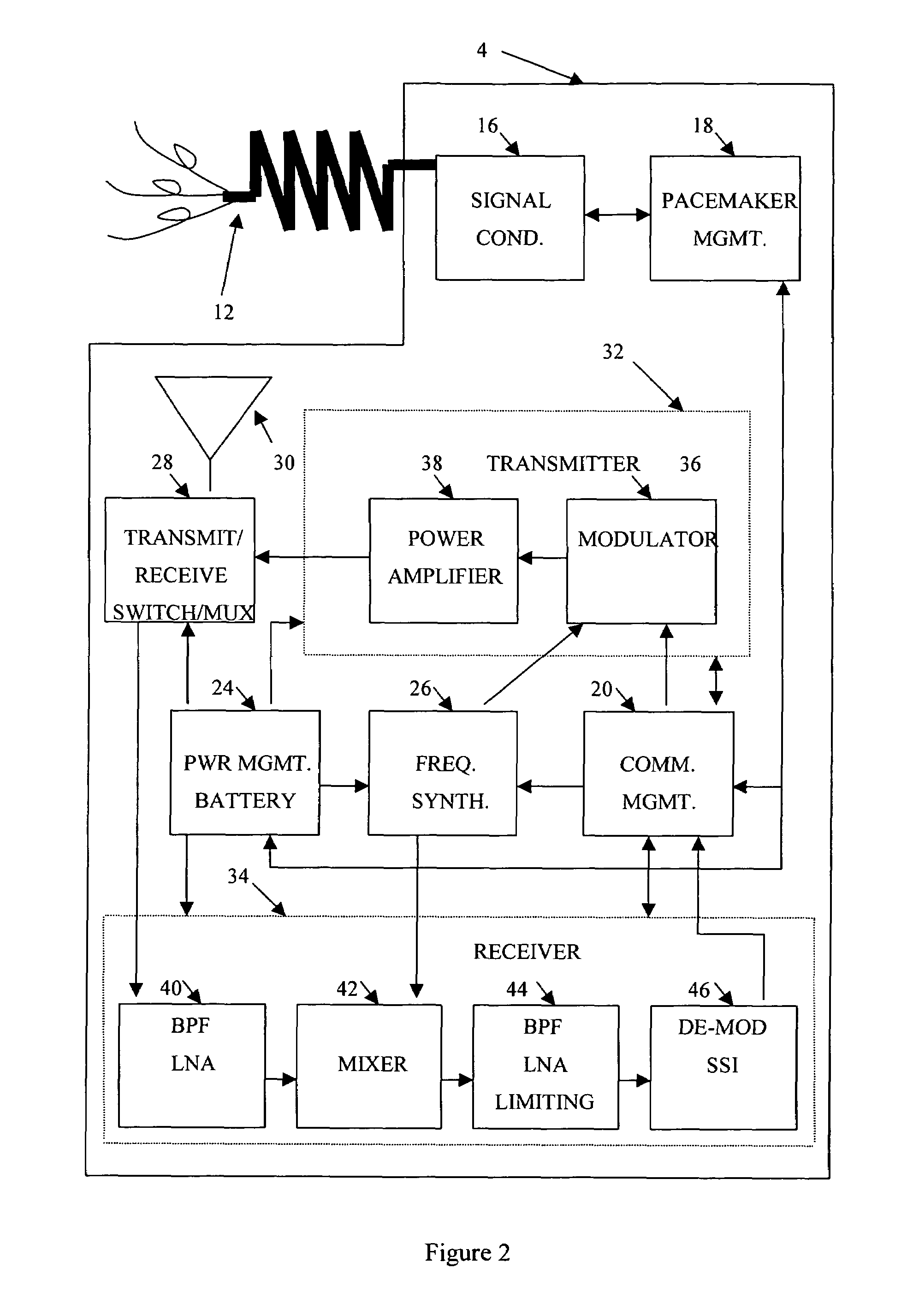High frequency wireless pacemaker
a wireless pacemaker and high frequency technology, applied in electrotherapy, heart stimulators, therapy, etc., can solve the problems of limited data rate and limited transmitter power, and achieve the effects of low power consumption of pacemakers, reasonable range, and high frequency operation
- Summary
- Abstract
- Description
- Claims
- Application Information
AI Technical Summary
Benefits of technology
Problems solved by technology
Method used
Image
Examples
first embodiment
[0044]the invention is comprised of an Implanted Wireless Pacemaker 4 which has been designed to provide all conventional pacemaker functionality while providing the ability to communicate with a Wireless Monitoring Base Station 6 as part of a Wireless Communications System 10. The Implanted Wireless Pacemaker 4 can be designed for two-way communications, or can be designed to only transmit to the Wireless Monitoring Base Station 6.
[0045]FIG. 2 illustrates the contents of a two-way, Implanted Wireless Pacemaker 4 which has been optimized for effective communications while minimizing battery power consumption. A set of Implanted Cardiac Leads for Monitoring and Pacing 12 is connected to Signal Conditioning Circuitry 16 in the Implanted Wireless Pacemaker 4 and provides the electrical connection to the patient for receiving electrical cardiac monitoring signals and for sending cardiac pacing signals to the patient (defibrillator signals could also be sent to the patient). Signal Condi...
fourth embodiment
[0063]the invention is to use the Wireless Pacemaker Housing 128 as the transmitting and / or receiving antenna. The completed Wireless Pacemaker Housing 128 is generally shaped in the form of a thick pancake. It is constructed of two halves such that one Pacemaker Housing Half 134 is designed to fit into the other Pacemaker Housing Half 134, similarly to a can of shoe polish with its lid (see FIG. 10A). When the housing is assembled, the halves are electrically insulated from each other using an insulating material 132. The electrical Insulating Material 132 is applied to both Pacemaker Housing Halves 134 to electrically isolate each Housing Half 134 from the other. The Insulating Material 132 could be comprised of a thin non-conducting film coated on each side with non-conducting adhesive to bond the film to each housing half. Alternatively, the insulating material 132 could consist of a non-conducting adhesive containing non-conducting particles (such as large plastic granules) tha...
fifth embodiment
[0066]the invention is to use the Wireless Pacemaker Housing 128 as the transmitting and / or receiving antenna. Conceptually, the completed Wireless Pacemaker Housing 128 is such that the Pacemaker Housing 128 is shaped as a cylindrical metal housing with metal ends which have been completely sealed (the Housing 128 is typically constructed of titanium) as shown in FIG. 11A. The Wireless Pacemaker Housing 128 can be completely hermetically sealed (i.e. all exposed surfaces are composed of metal, glass, or ceramic and all joints are sealed by fusion, which is localized melting of the two materials comprising the joint). Generally speaking, hermetically sealed housings provide optimum protection in an implanted environment.
[0067]Each end of the Wireless Pacemaker Housing 128 is electrically driven (from circuitry inside the housing) from a Transmitting RF Power Amplifier 156 (optimized for driving the Coaxial Cables 150 connected to the metal ends of the Wireless Pacemaker Housing 128)...
PUM
 Login to View More
Login to View More Abstract
Description
Claims
Application Information
 Login to View More
Login to View More - R&D
- Intellectual Property
- Life Sciences
- Materials
- Tech Scout
- Unparalleled Data Quality
- Higher Quality Content
- 60% Fewer Hallucinations
Browse by: Latest US Patents, China's latest patents, Technical Efficacy Thesaurus, Application Domain, Technology Topic, Popular Technical Reports.
© 2025 PatSnap. All rights reserved.Legal|Privacy policy|Modern Slavery Act Transparency Statement|Sitemap|About US| Contact US: help@patsnap.com



